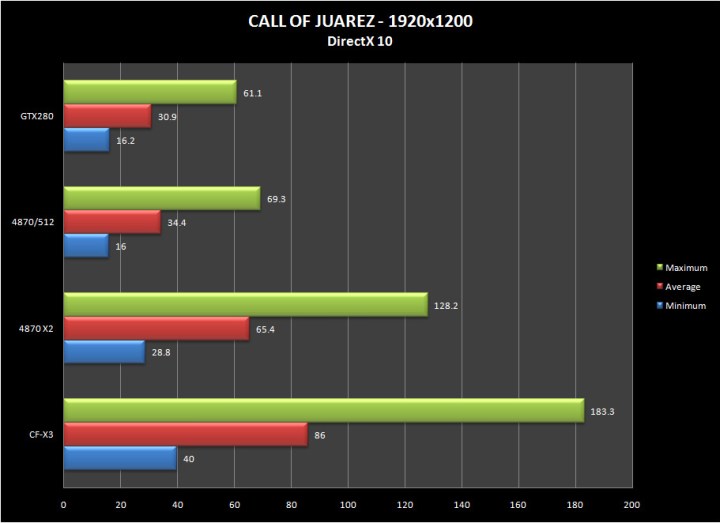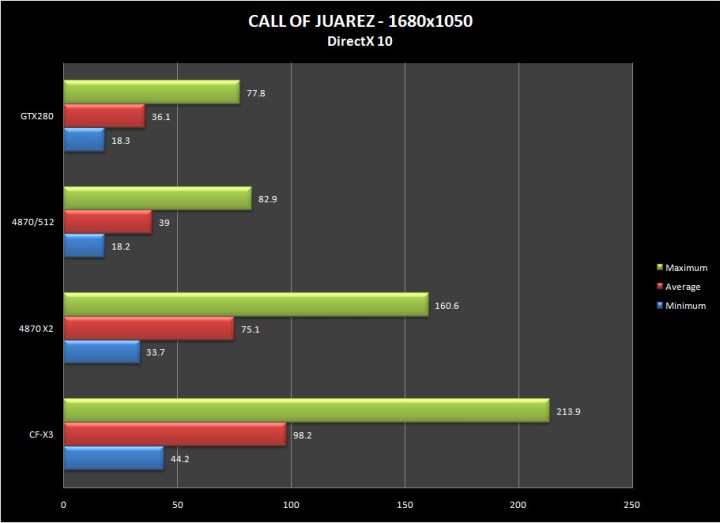GPU Shoot-Out – Part II – Setting New Benches
Call of Juarez DX10 benchmark
Call of Juarez is the first ever DX10 benchmark from Techland that was released in June 2007 as a fast-paced Wild West Epic Adventure Shooter. Call of Juarez is loosely based on Spaghetti Westerns that become popular in the early 1970s. The game features playing as two different characters and two very different styles of play: Billy ‘Candle’, a young fugitive accused of murder and his step-uncle and hunter, Reverend Ray, an ex-outlaw who turned to religion. Call of Juarez features it’s Chrome Engine using Shader Model 4 with DirectX 10, so the usage of Vista is mandatory. This benchmark isn’t built into Call of Juarez but is a stand-alone that runs a simple fly-through of a level that’s built to showcase the game’s new DX10 effects. It offers great repeatability and is a good stress test for DX10 features in today’s graphics cards although it is not quite the same as actual gameplay as the game logic and AI are stripped out of the demo. Still it is very useful in comparing video cards performance. When running the benchmark, you get the highlights of the Call of Juarez’ features captioned right on the screen as they are demonstrated:
physics-based particles via geometry shader
fully dynamic real-time shadowing
soft-edged grass and leaves
dense vegetation
HDR lighting
next-gen material shaders
HDR-correct AA
Performing the benchmark is easy. You are presented with a simple menu to choose resolution, anti-aliasing, and two choices of shadow quality options. We set the shadow quality on “high” and the shadow map resolution to its maximum, 2048×2048. At the end, the demo presents you with the minimum frame rate, maximum frame rate, and average frame rate, along with the option to quit or run the benchmark again. We always ran the benchmark at least a second time and recorded that generally higher score.


Call of Juarez still demands a lot from single-GPU solutions. Fortunately 4870X2 and crossfireX-3 scale really well.







